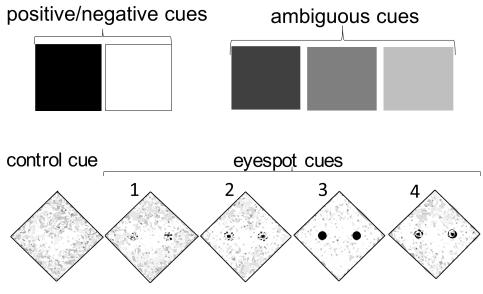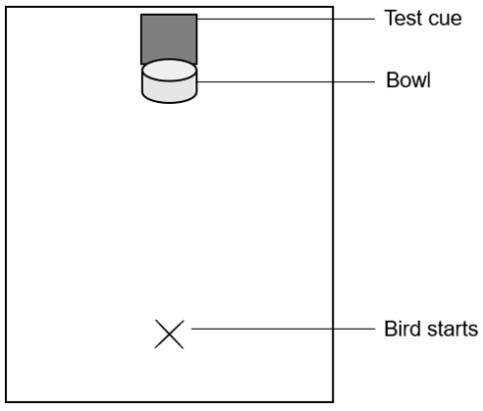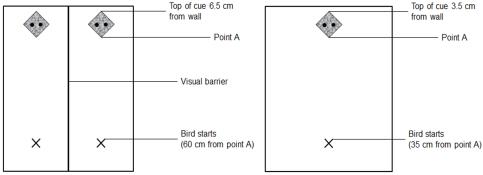Methods

Red junglefowl (Gallus gallus) chicks from two cohorts were tested with both judgement bias test and eyespot test in two versions differing in the number of test cues: original and simplified version. The first cohort was tested once with both the judgement bias test and eyespot test, while this procedure was repeated twice for the second cohort.

Judgement bias test
After training chicks to discriminate a positive and a negative cue, the latency to approach ambiguous cues was measured and compared to responses to learnt cues. A response closer to responses to the positive cue was assumed to indicate a better state.

Eyespot test
In the eyespot test, after chicks learnt to associate a position (control cue) with a reward, the latency to approach and distance from an eyespot cue in the same position were measured and compared to responses to the control cue. A response closer to responses to control cue putatively indicated a better state.
The arena used in the original version (left) differed from the arena used in the simplified version (right)

Data analyses
- I controlled for differences in locomotory activity in all tests for all measurements.
- I ran Spearman rank correlations to compare measurements from the judgement bias test and the eyespot test.
- I pooled data if Spearman’s Rho > +0.3 or < -0.3 in just one sex or treatment.
- I controlled for effects of learning that the ambiguous cue was unrewarded due to repeated exposures in the judgement bias test (loss of ambiguity).
- I detected outliers using boxplots.
Responsible for this page:
Director of undergraduate studies Biology
Last updated:
05/15/21
